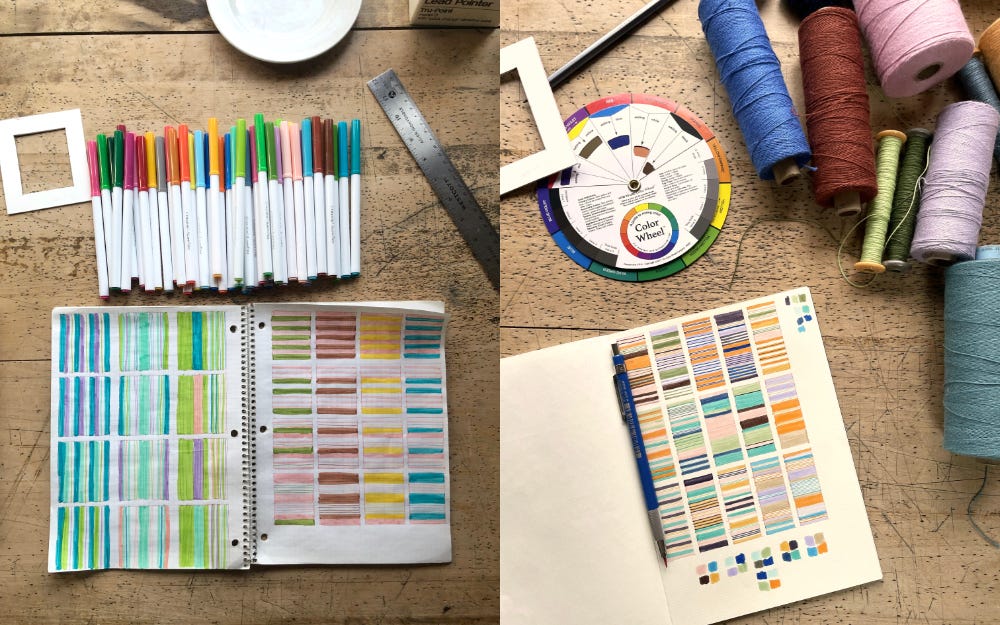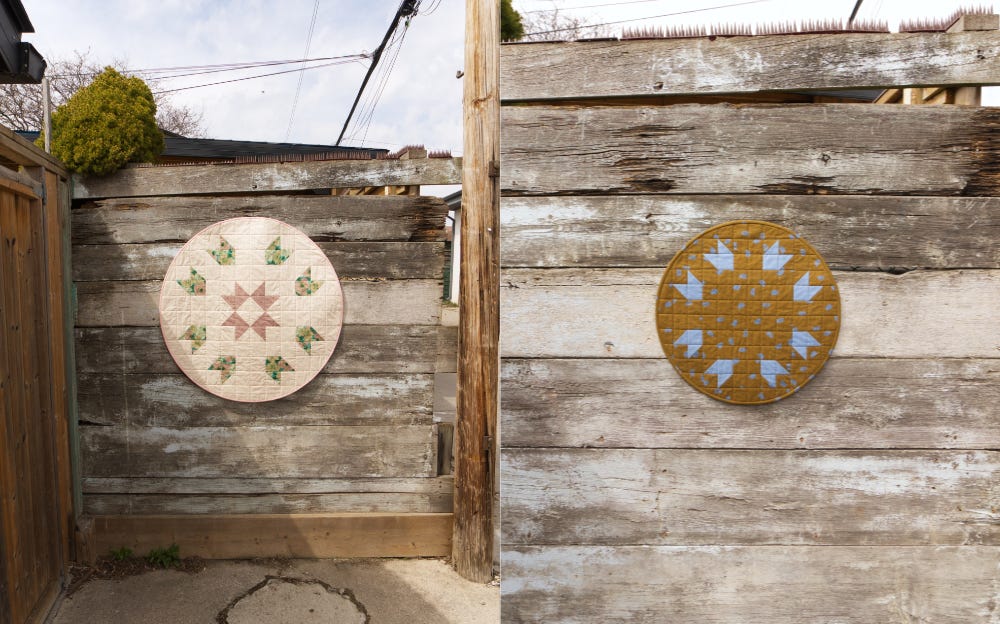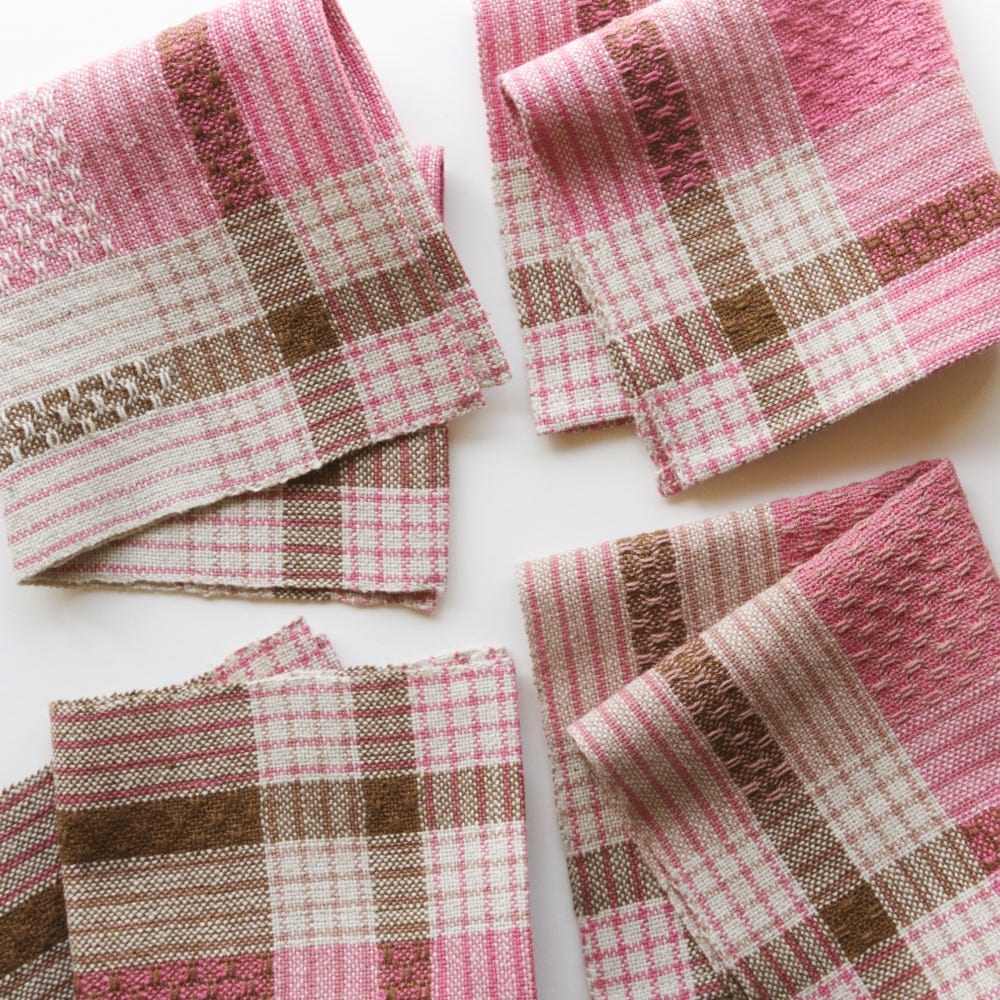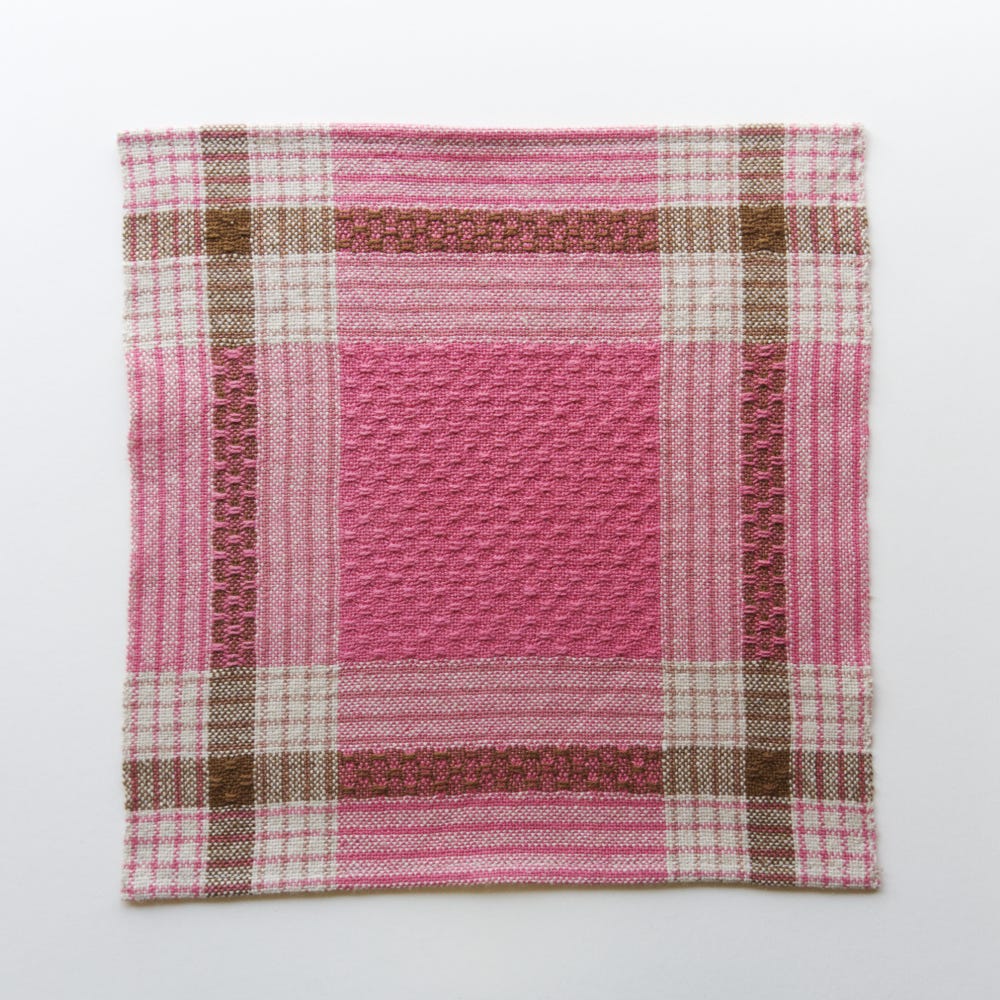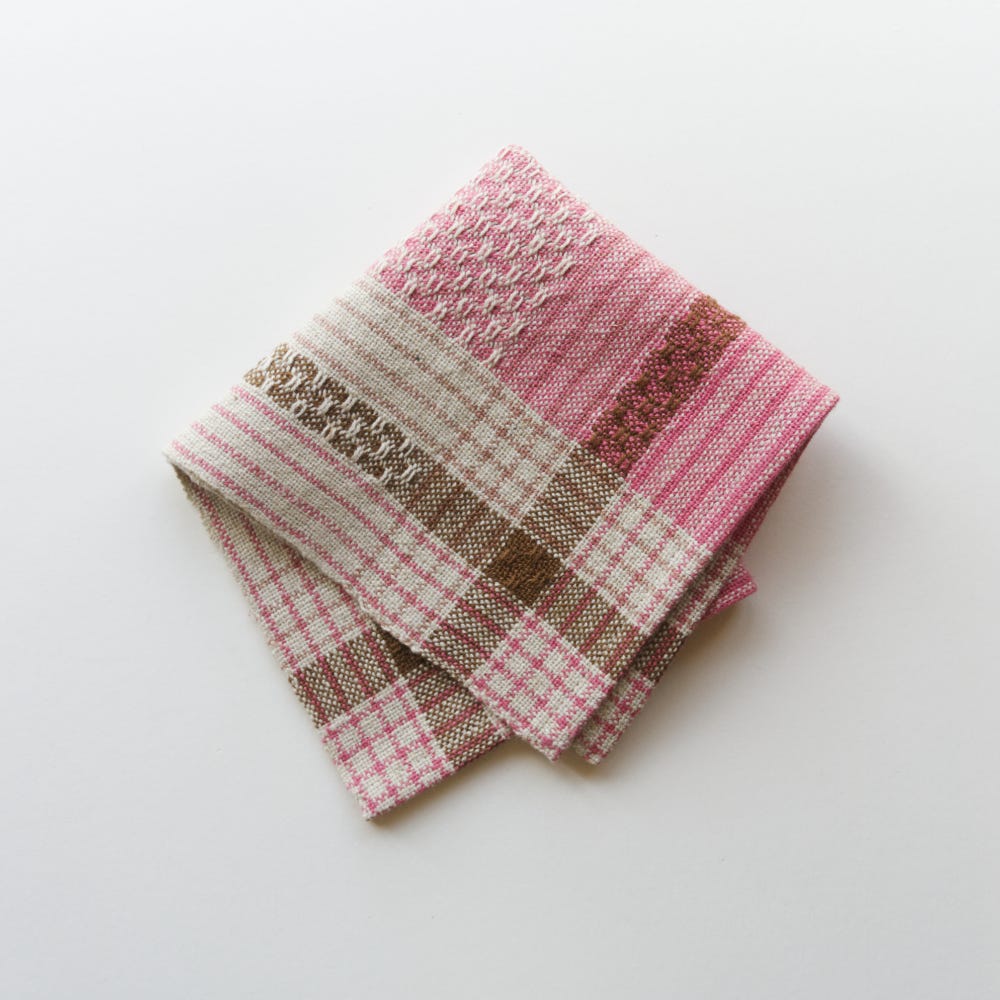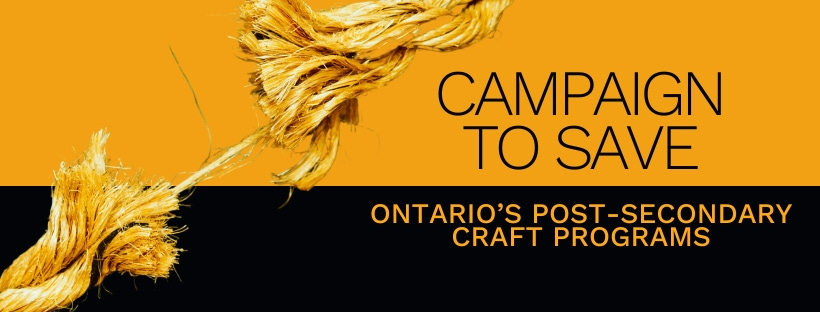In this newsletter you’ll find:
Studio Views
New Pattern! Rosa Wash Cloth
Save Craft Education in Ontario
Things to See & Read
Studio Views
I got a huge dose of new cottolin colours, so I updated my colour library. Very satisfying.
Let’s learn about stripes together this month! As of writing, there are only four spaces left in my class at the Textile Studio Coop on Saturday May 17th in Toronto. I’ll also be in Montreal the following weekend with the same program at Irene Textiles on May 24th and 25th. It looks like the 25th is sold out ☺!
I helped my friend Leo take some pictures of her very first quilt pattern! The Daphne Quilt has three sizes and makes a pleasingly round mat, small quilt, and large quilt. Quilting is wild — as an imperfect but enthusiastic sewer, sewing circles feels like a real flex, but Leo has made it simple to achieve with some clever templates and charts (her method is genius). The PDF is very in-depth but the project is also very straightforward, so I think quilting folks will like the easy challenge!
New Pattern: Rosa Wash Cloth
Last year I spent all my energy on teaching, but now I feel like I have a better handle on it so I’ve been working through a backlog of ideas and projects. This is probably the last one for a while though, so I hope you enjoy it! Here is the Rosa Wash Cloth.
Last year, when I wrote the trio of article on lace weaving for Gist Yarn (articles one, two, and three, if you’re interested), I wanted to spend some more time with the structures and develop some into full projects. I loved the texture I got from lace in my Soap Bag pattern, so I decided to make a wash cloth to match.
This is a small project suitable for four shaft table looms. A central lace panel is bordered by many small stripes and checks (but don’t worry — it’s easy to carry the colours up the side, so there’s not too many colour changes). It’s a very small project that’s quick to weave, and is a great stash-busting project; one colour only requires 40 yds! I used the brown yarn leftover from the Circus Napkins, too.
Thank you for your continued support of my weaving patterns! I get so many nice messages and I really love seeing your projects. Purchase the Rosa Wash Cloth pattern on my website here.
Save Craft Education in Ontario
Craft Ontario is asking for everyone’s help in saving our province’s post-secondary craft programs, which are facing drastic cuts, suspended intake or review. As an educator and craft artist, these programs are deeply important to me and it would be devastating to lose them.
As Craft Ontario points out, the arts and cultural sector in Ontario “contributes $26 billion annually to Ontario’s GDP — that’s 3.3% of the province’s total output — and supports over 270,000 jobs.” One of those jobs is mine! I know that for many people reading this, Ontario colleges and universities will be completely irrelevant, but if you’ve ever bought any of my patterns or work, you’re participating in this sector. This is how I make my living, so it seems critical to share it as widely as I can, so that there’s a future for me and for the next generation of weaving pattern designers and potters and jewellers (among others!).
Several weeks ago our Premier said many of these at-risk programs are “basketweaving courses,” claiming that cuts will free up more investment for STEM and tech programs, the “future” of our economy. Clearly he has never woven a basket before (which I suggest you do with my friend Johnny at Lakeshore Willows this coming summer) nor does he appreciate how baskets, crafts, and hands-on learning ARE the original tech — the kind that developed us as a species. The oldest basket, found in Muraba‘at Cave in 2021 is 10,500 years old, and doesn’t look much different from ones I’ve woven. And, of course, many basketry techniques are similar to weaving; over one, under one, 0 or 1, however you want to say it, these actions lead to the creative leaps that have brought to our computer technology today.
So much of making (whether you are a professional, amateur, or somewhere in between) is about problem solving and creativity, skills that are developed through liberal arts education. The tacit knowledge gained through pursuits like basketry, jewellery, ceramics, furniture making and textiles — some of the program areas at risk — are critical to the tech, automotive, and other economic (read: big money) fields that are supposedly the “future”. The anecdote I shared last month about the aerospace student at Landmade is proof of this — he was fascinated by what wool and weaving could teach him about making panels for airplanes.
Craft Ontario is asking folks who value these programs as much as I do to write your MPP, the leadership of these schools and programs, or to share this with your networks to raise awareness. Read more about this campaign here, where you can also find a form letter to send to college and university leaders, as well as the Ministry of Colleges and Universities. Thank you!
Things to See & Read
You can see graduating student work from the program I teach in on the Mass Exodus website here! I particularly enjoyed seeing Cali Greenidge’s AFIA collection, which I saw at several stages of production over the academic year. Cali deconstructed kente cloth and rewove it on the loom, using the long trailing ends to create a cape of ribboned pieces.
You can see her collection on the recording of the live show here (at minute 37:12), as well as the other two shows on the same channel. Even though I’ve been teaching at TMU for two years now, fashion still feels like a whole new world and I love seeing what our students make. I’m already looking forward to next year when several of my past students will be graduating!
I’m interested in seeing Cloth; 100 Artists, by Lena Corwin, a recently published book that “spotlights American artists using (and reinventing) heritage techniques. The contributors represent a wide spectrum of age, gender, race, and locale; and their rooted ancestral influences are unique. Each artist, including Lena herself, shares their fascinating perspective and process to create a book that is a colorful, captivating portrait of works made with fiber.”
The publication features artists such as Isa Rodrigues (I love her Piscina work), Zak Foster (his use of text in quilts is really exciting to me. Some of the works in Southern White Amnesia are really striking), and Windy Chien (whose Circuit Board series is cleverly constructed from knots, though at first glance it looks like passementerie!), and several DIY projects.
After June’s newsletter I’ll be taking a bit of break from writing this while I attend an artist residency, but I will be back in September with plenty to share.
Amanda





